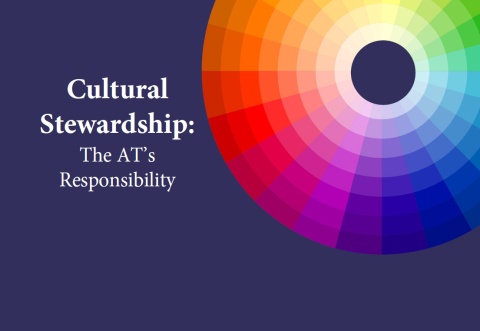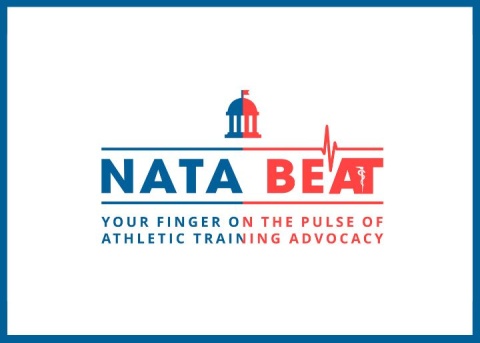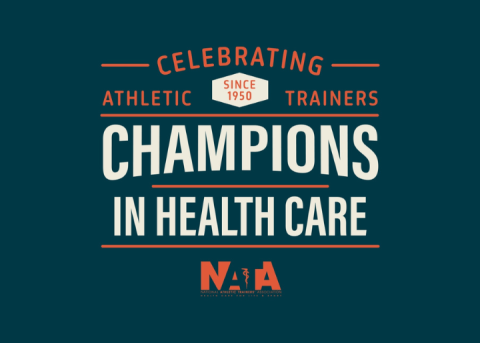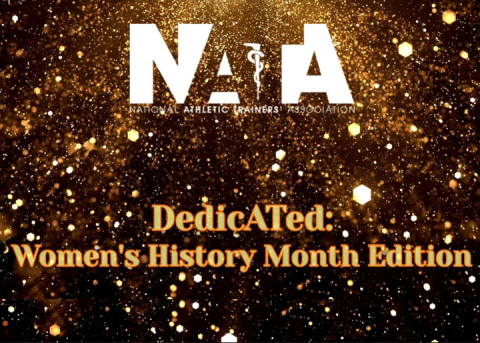
By Kevin M. Schroeder DAT, LAT, ATC, and Dani M. Moffit PhD, LAT, ATC, NATA LGBTQ+ Advisory Committee
We’ve all been there before: A patient comes into our athletic training facility, we exchange greetings, discuss the reason for the visit, provide care, say our goodbyes and then they go about their day.
We make a conscious effort to greet them by their name; give them a firm, confident handshake; and provide direct eye contact so the patient knows they are the focus of our attention for the course of the appointment. Additionally, you did all of this with a big smile on your face. In short, it was the epitome of quality customer service and patient care. After all, isn’t this what you would want from your provider if you were actively seeking care?
However, what each patient expects to see, hear and experience in their own health care encounters is very individualized. While many may appreciate the greeting, handshake and direct eye contact, others may not. In fact, in some cultures, direct eye contact can be deemed as aggressive, condescending or even intimidating. A firm handshake, while widely understood to be a typical gesture in many cultures as friendly and polite, may also be seen as intrusive or not respectful of personal space. Furthermore, in some cultures, it is highly egregious for a male provider to treat a female patient and vice versa, or for a person in a subordinate role (e.g., a patient) to speak freely to that of one in a more superior role (e.g., provider). When addressing patients, the difference between using a first or last name, as well as the pronunciation, can set the tone for showing respect toward them.
One of the authors of this blog distinctly remembers caring for a patient from an eastern European nation several years ago and experiencing a language barrier that prevented clear communication. While best practices dictated that the AT find an interpreter, that wasn’t an option at the time. As such, the AT did their best to keep their language short, succinct and free of expressions or idioms, trying to ensure that the patient understood the plan of care.
The AT would stop every few sentences to check with the patient to acknowledge that they understood. Every time the AT did this, they would get the universal head nod for “no,” signaling that they did not in fact understand. This went on for several minutes. When the AT thought they were finally on the same page, the AT checked in one last time and asked if they had any questions. Thinking there would be none, the patient nodded “yes” to having questions. Needless to say, the AT was frustrated. The AT was actively listening, checking for understanding and summarizing when appropriate, and there yet there was still a disconnect. However, as the AT later found out, in this patient’s culture, the traditional “yes” nod of the head in their culture actually means “no” in the AT’s culture. Conversely, the opposite was true for the “no” head nod.
As health care providers, the importance of bringing forth cultural stewardship into our athletic training facility is stronger now more than ever. Cultural stewardship is the philosophy that a person is responsible for preserving the value of cultural objects, events, resources and traditions. Each athletic trainer has a moral and ethical responsibility to be a cultural steward to their patients in order to provide the best possible care. Moreover, who are we as both individuals and populations without our own culture? Even athletic trainers have their own culture (who doesn’t love free gear from our beloved teams?). Like all health care providers, we need to understand that culture can’t be removed from a patient or patient population and, as such, we must work with cultural characteristics, embracing them as a means to enhance patient care rather than barriers.
While we understand the importance of culture in patient care, we should not assume the cultural practices of each individual patient. Model practice recommendations inform us that each athletic trainer:
- Should make an ongoing, conscious effort to be aware of the idea that each person is a unique mix of race, ethnicity, religion, sexual orientation, gender identity, and more.
- Should recognize they may not subscribe to certain beliefs such as crystals holding healing properties, or that essential oils can aid in care, but the patient might.
- Must ask questions: Good practice is asking your patients if they use alternative forms of healing.
It is your responsibility as a provider to find a way to consider a patient's cultural beliefs into the care you provide.
A colleague once told a story about a time he was covering a Friday night football game where one of the patients tore his ACL. The patient was instructed to use rest, ice, compression, elevation as well as ambulatory support via crutches. They were to continue with this care through the evening and to follow up the next morning.
When the patient arrived the next morning, this colleague described how the patient seemed to have created their own care plan that included a banana leaf containing a mixture of various plants and spices wrapped around the knee. The colleague confessed that he had not taken into consideration the cultural traditions of the patient and consequently did not align evidence-based care with attention to the patient’s culture. Ironically, when the patient came to the clinic the next morning, there was virtually no swelling present in the knee.
Cultural stewardship is crucial to gaining trust and building rapport with the patients we treat. It is the responsibility of each of us to create an environment that is not only welcoming but celebratory toward the cultures of the patients we care for. It should be the goal of each athletic trainer to want to create their own philosophy of appreciation and acceptance of the culture of others. A critical component of providing quality patient-centered care, this should be a key objective that every athletic trainer strives for in their own clinical practice. Consider these four questions about your own clinical practice:
- What does being a cultural steward mean to me?
- How do I create an environment that is inviting to all? Is there something I can be doing better to improve my patient care through cultural stewardship?
- Do I have someone I trust who provides an objective assessment of my practices as a cultural steward? If so, what would they say about me?
- How can I be a role model in cultural stewardship?
Whether it includes having access to interpreters (e.g., BoostLingo), including celebrations of all holidays, or being willing to be a lifelong learner, athletic trainers need to keep in mind that patient-centered care is a gift to every patient who enters the athletic training facility. Through cultural stewardship, a patient knows their provider is giving the care they understand and deserve.
Resources to consider for increasing knowledge in areas of cultural stewardship:
- Online Courses: Safe Space Ally Training – Levels 1 and 2 (NATA Professional Development Center; anticipated release date: summer 2023)
- Trainings: Transgender Resource Center of New Mexico
- Book: “Seeing Patients: Unconscious Bias in Healthcare” by Augustus A. White III
- Book/Audiobook: “Blindspot” by Mahzarin R. Banaji and Anthony G. Greenwald
- Textbook: “Cultural Competence in Sports Medicine” by Lorin Cartwright, MS, ATC, CAA, and René Revis Shingles, PhD, AT, ATC
- DVD: “Cracking the Codes: The System of Racial Inequality” by Shakti Butler
- DVD: “Mirrors of Privilege: Making Whiteness Visible” by Shakti Butler
- Resource Guide: Cultural competence in health care




